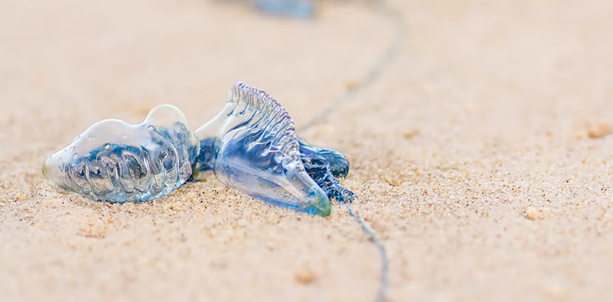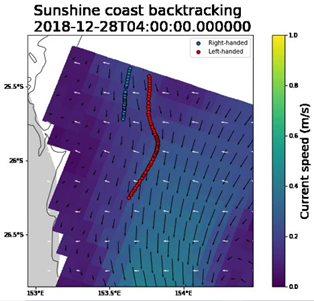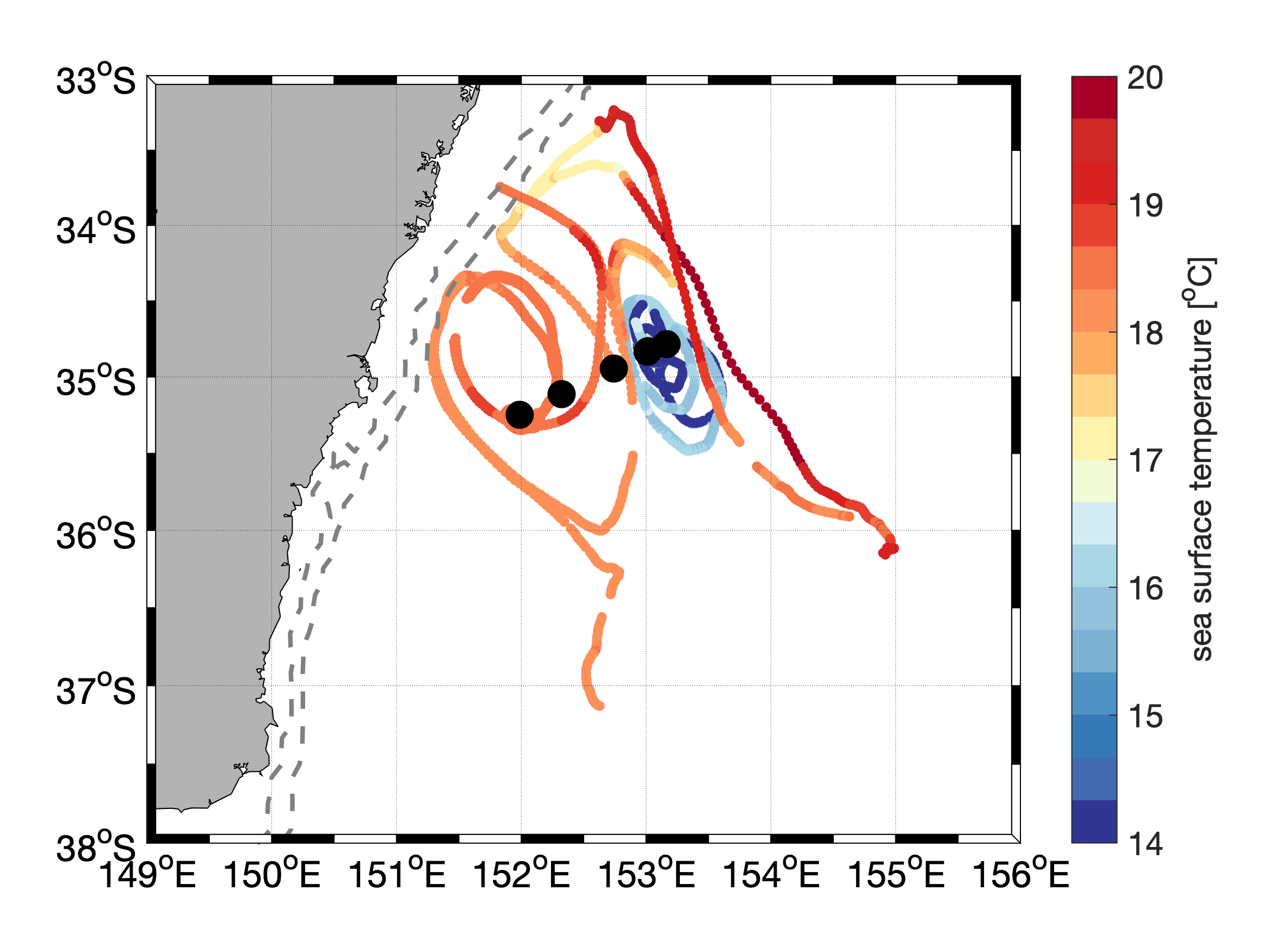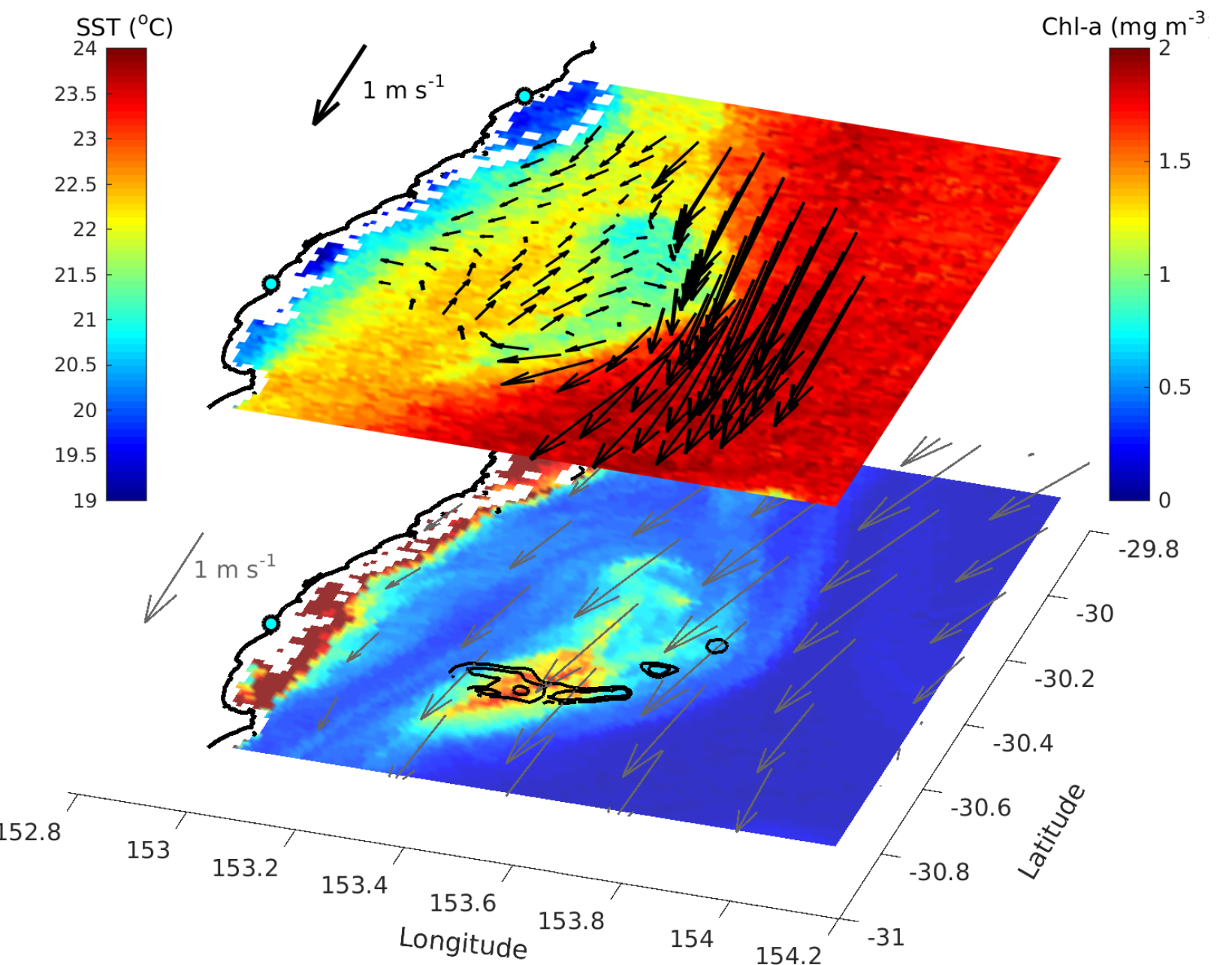
With the projected rise of ocean temperatures globally, extreme ocean weather events such as Marine Heatwaves (MHWs) are expected to become increasingly common and more intense. MHWs regularly occur off the coast of Southeast Australia, with ocean temperatures sometimes reaching 4℃ above normal.
We presently know little on how MHWs develop in coastal areas and their impact on coastal physics and biogeochemistry. Yet we have a vast amount of ocean data at our fingertips.
The aim of this PhD project is to explore how MHWs develop and the biogeochemical impact in the coastal waters off Australia inshore of the East Australian Current. This project is part of a larger program of work exploring MHWs and will be based at the University of New South Wales (UNSW), Sydney Australia.
Through Australia's Integrated Marine Observing System (IMOS) the candidate will have access to large untapped observational data sets. Data have been collected off eastern Australia using autonomous underwater gliders quarterly since 2008. These remote ocean robots dive to depths of up to 200 m and measure ocean variables such as temperature, salinity, and chlorophyll fluorescence. In addition, we have collected over 70 years of continuous ocean measurements at the national reference station, a decade of moored time series at multiple mooring stations along the NSW coastline. These data will be combined with satellite remote sensed data including sea surface temperature and chlorophyll.
More info full project description and information

Many Australians have had a painful bluebottle sting when swimming at the beach, yet little is known about the bluebottle, its lifecycle and behaviour.
This PhD project is part of a large ARC Linkage Project that is a collaboration between the University of New South Wales, Griffith University and Surf Life Saving Australia. The aim of the PhD project is to understand and predict bluebottle's arrival to shore. The bluebottle (Physalia physalis) is a colonial cnidarian that floats on the ocean surface and is transported by the currents and the wind. The float (also known as the sail) comes in left and right- handed forms, with each form predicted to move in different directions relative to the wind. The different forms are easily observed on beach stranded individuals, but no data exist in Australia on the abundance of each form and their population dynamics throughout the year.
No aquarium has managed to keep bluebottles alive for more than a week, and hence little is known about the bluebottle's behaviour in response to specific environmental factors. A purpose-built tank is being developed at Sea World (Gold Coast) that will enable experiments on the behaviour of bluebottles to be undertaken. An outcome of this project may be the addition of bluebottle display within the Sea Jellies Illuminated exhibition.
More info full project description and information

Many Australians have had a painful bluebottle sting when swimming at the beach, yet little is known about the bluebottle and its journey before reaching the coast.
This PhD project is part of a large ARC Linkage Project, BluebottleWatch, that is a collaboration between the University of New South Wales, Griffith University, the Bureau of Meteorology, and Surf Life Saving Australia. The aim of the PhD project is to understand and model the pathways of bluebottles in the ocean, controlled by ocean currents and winds.
The aim of this PhD project is to explore the impact of winds, currents, and waves on bluebottle trajectories. Also to investigate the origin of bluebottles and drivers of seasonal and inter-annual variability in bluebottle swarms.
More info full project description and information

Surface drifting buoys, or drifters, are routinely used for research and operational oceanographic applications, contributing to our understanding of ocean circulation and providing data to improve weather forecasts. Although technologically simple, drifters have a unique ability to observe the ocean at small enough time and space scales to quantify dispersion in the upper ocean - driven by turbulence at scales from surface gravity waves through the submesoscale to large scale geostrophic eddies [1]
During a research cruise in the East Australian Current (EAC), 22 drifters were deployed in pairs offshore of the continental shelf. The experiment was designed to quantify the dispersal regime and quantifying the different dynamic regimes present in this region where the EAC separates from the coastline. By using the relative separation of these drifter pairs in time, we can examine the cascade of energy in the system, down from the large-scale mesoscale eddies to smaller scales of turbulence, following methods laid out in a thorough review by LaCasce (2008) [2]. An understanding of the flow of this energy to smaller scales helps understand the impact which ocean eddies have on both the mixing of water masses and ecosystems along the coast [3]
In this project you will gain knowledge on the submesoscale dynamics which responsible for driving much of the life which takes place in the ocean as well as the transport of pollutants such as oil or plastics within ocean basins. You will also gain experience with an observational platform which is widely used across both research and commercial sectors. Some knowledge of statistical and dynamical analysis is needed, as well experience programming in Python or MATLAB.
Background reading[1] Lumpkin, R., Özgökmen, T. & Centurioni, L. Advances in the Application of Surface Drifters. Ann. Rev. Mar. Sci. 9, 59-81 (2017).
[2] LaCasce, J. H. Statistics from Lagrangian observations. Prog. Oceanogr. 77, 1-29 (2008).
[3] Van Sebille, E. et al. Pairwise surface drifter separation in the western Pacific sector of the Southern Ocean. J. Geophys. Res. Ocean. 120, 6769-6781 (2015).


The East Australian Current (EAC) is a hotspot for climate change with unprecedented multidecadal warming and freshening occurring there. Understanding the drivers of these changes in both temperature and salinity is critical to understanding the impacts of climate change on marine ecosystems and society. This project will employ new observations, climate model simulations, and cutting edge analysis tools to provide a characterization of EAC waters.
The student will investigate past and future variability including extreme events and the effect on sea level, and identify the dynamical drivers and the impact on biological systems. The student requires an undergraduate degree or equivalent experience in dynamical physical oceanography, or a similar field such as atmospheric science or an equivalently numerate field such as physics, mathematics or engineering.
Knowledge of statistical and dynamical analysis techniques. Technical expertise in Matlab or Python programming is highly desirable, as well as experience with Linux. The student should have a bold outlook with regard to their potential contribution to oceanography. They should have a clear vision regarding how their PhD training can propel them into diverse and evolving career areas relevant to climate change and marine research.
More info here
Fluorescence measurements (a proxy for chlorophyll) obtained from repeated ocean gliders deployments and oceanographic moorings on the continental shelf of Australia will be analyzed and related to the physical oceanographic conditions (temperature, salinity) and forcings (wind, current, eddy encroachment).
Required skills: Some knowledge of Physical oceanography and statistics; Matlab or Python programming.

Figure 1: Shows wind stress, Chlorophyll, Dissolved oxygen (20m below the surface), temperature and along shore current speed (through the water column) at the 100m isobaths off Sydney. What drives the spikes in Chlorohpyll from day 10 to day 20?
Frontal eddies are small cyclonic eddies on the landward side of the Western Boundary Current jet, which characterised by clockwise rotated water columns in the Southern Hemisphere. Despite their small size and short life, frontal eddies are significantly more productive than mesoscale cyclonic eddies and have the potential to contribute significantly to the net productivity of the Tasman Sea region (Roughan et al., 2017). The observations from high-frequency radar measurements show that cyclonic eddies occur all year long between 30°S and 30.7°S (Mantovanelli et al., 2017; Schaeffer & Roughan, 2017). Energetics analysis is an effective method of quantifying the energy exchange between the mean flow and eddies. Positive barotropic conversion indicates eddies drain energy from the mean flow to develop, and regions of negative barotropic conversion are regions of eddy decay (Gula et al., 2015). Based on a long-term (26-year), high-resolution (<6km) ocean model simulation, we found negative barotropic conversion values associated with the decay of cyclonic eddies at ~27°S-28°S and ~30.5°S-31.5°S, concomitant with the presence of frontal eddies with likely higher productivity. This project aims to further investigate the formation, evolution and decay of frontal eddies in the East Australian Current system using a model output.
In this project, the students will gain knowledge of the evolution of frontal eddies in the East Australian Current. You will also learn skills in processing big data from ocean model outputs and satellite observations.
The students should have a background in physical oceanography, or related discipline such as applied mathematics, data science, etc. Experience in Matlab or Python programming is required.
Background reading
[1] Gula, J., Molemaker, M. J., & McWilliams, J. C. (2015). Gulf Stream Dynamics along the Southeastern U.S. Seaboard. Journal of Physical Oceanography,45(3), 690-715. doi: 10.1175/JPO-D-14-0154.1.
[2] Mantovanelli, A., Keating, S., Wyatt, L. R., Roughan, M., & Schaeffer, A. (2017). Lagrangian and Eulerian characterization of two counter-rotating submesoscale eddies in a western boundary current. Journal of Geophysical Research:Oceans,122(6), 4902-4921. doi: 10.1002/2016JC011968.
[3] Roughan, M., Keating, S. R., Schaeffer, A., Cetina Heredia, P., Rocha, C., Griffin,D., . . . Suthers, I. M. (2017). A tale of two eddies: The biophysical characteristics of two contrasting cyclonic eddies in the East Australian Current System. Journal of Geophysical Research: Oceans, 122(3), 2494-2518. doi:55410.1002/2016JC012241.
[4] Schaeffer, A., Gramoulle, A., Roughan, M., and Mantovanelli, A. (2017), Characterizing frontal eddies along the East Australian Current from HF radar observations, Journal of Geophysical Research: Oceans, 122, 3964-3980, doi:10.1002/2016JC012171.

Figure 1: Sea surface temperature, Chl-a concentration, and curface current vectors associated with a frontal eddy (from Schaeffer et al. 2017).
The dynamics of the ocean is dominated by "eddies" --- rotating columns of sea water tens or hundreds of kilometers across and thousands of meters deep. These eddies are important for controlling large-scale ocean circulation, exchanging nutrients and carbon with the deep ocean, and transporting heat, salt, and biota across ocean basins. Capturing the location and characteristics of eddies is therefore important. For this task we often rely on the sea-surface height signature of eddies, as captured by satellite observations. However, the relatively small spatial extent and rapidly changing characteristics are sometimes missed by sparsely separated satellite passes, prompting the use of aggregated or gridded data products in order to capture eddy features. Using simulated and real satellite data, the student will investigate the impact of different approaches to aggregated or gridded satellite data, with consideration for inherent benefits and drawbacks of each method, and with an aim to improve our ability to find and track ocean eddies using current and future satellite data.
The student will examine ocean model output from ROMS (the Regional Ocean Modelling System) and will learn how to manipulate and analyse large datasets from models and observations. Interpreting this data will require oceanographic knowledge. There may also be opportunities to contribute to the next generation of Earth observing satellites.
A background in physical oceanography is required. Experience in climate sciences, atmospheric sciences, numerical modelling would be beneficial. Skill with data analysis language (Matlab, Python, etc) is required.
The south coast of New South Wales is warming faster than any other part of the east Australian coast with severe impacts on vulnerable marine ecosystems (eg. penguin colonies on Montague Island). While studies (e.g. Philips et. al. 2019, Malan et. al. 2021) have addressed this mean warming trend and its drivers in a general way, detailed understanding of how temperature dynamics and variability are changing has yet to be reached. The area is strongly influenced by the increasing intensity of the East Australian Current's southern eddy-field, as well as the so-far unexplored subsurface equatorward flow of cold shelf water. This study aims to leverage a decade worth of detailed in-situ mooring observations of both temperature and velocity in order to understand the changes in temperature structure, variability, stratification and extreme events at 36°S
In this project, the students will gain a knowledge of multi-scale ocean processes, and work with a wide range of both moored and satellite ocean observations, there is also an opportunity to include some work with a regional ocean model.
This project requires a background of physical oceanography and shelf ocean dynamics, and experience of scientific programming and data analysis, preferably in Python. An interest in the future marine ecosystems and the role of temperature extremes would be an advantage.
Background reading ABC news article on south coast ocean warming
[1] Carroll, G., Everett, J. D., Harcourt, R., Slip, D., & Jonsen, I. (2016). High sea surface temperatures driven by a strengthening current reduce foraging success by penguins. Scientific Reports, 6(1), 1-13. https://doi.org/10.1038/srep22236
[2] Malan, N., Roughan, M., & Kerry, C. (2021). The Rate of Coastal Temperature Rise Adjacent to a Warming Western Boundary Current is Nonuniform with Latitude. Geophysical Research Letters, 48(3), 1-10. https://doi.org/10.1029/2020GL090751
[3] Phillips, L. R., Carroll, G., Jonsen, I., Harcourt, R., & Roughan, M. (2020). A Water Mass Classification Approach to Tracking Variability in the East Australian Current. Frontiers in Marine Science, 7(June), 1-10. https://doi.org/10.3389/fmars.2020.00365
Bluebottle jellyfish (Physalia sp.) are a common sight off the coast of Eastern Australia and can sting swimmers when present on popular beaches. Within each individual, specialized cells called cnidocytes are able to inject the toxins into target organisms for defense or feeding purposes. Some species of nudibranchs such as the blue sea dragon (Glaucus atlanticus) can feed on bluebottles. Remarkably, sea dragons are not only immune to the venom, but they can incorporate cnidocytes into their own bodies, keep them alive for an extended period of time, and eventually activate their toxin release in a controlled manner to sting and capture pray. The genetic circuitry enabling this extreme and fascinating evolutionary adaptation is not understood. This project proposes to combine single cell transcriptomics with microscopy and data analytics to define the gene expression profile of cnidocytes in their original context and after incorporation by nudibranches. Briefly, we will collect bluebottle jellyfish and blue sea dragons from the wild on the beach, dissociate them into single cell suspensions, isolate the cnidocytes using an automated micromanipulator, and perform single cell gene expression profiling to identify what genes are underlying the adaptation of toxin-secreting jellyfish cells to their new host. This project combines field collection, molecular biology, and data science, and will be embedded in multi-disciplinary research on the Bluebottle.
This project is appropriate for both honours/master (1 year) and PhD students (3.5 years).
This project is a fantastic opportunity to apply cutting-edge molecular techniques and data analysis to understand a key process in marine evolution. The student will be guided in all aspects.
The candidate should have a background in biomedicine, marine biology, or data science. We are looking for a motivated student, fast-learning, and passionate about science. Experience in programming (preferably Python) or wet lab experiments are a plus.
For enquiries, write to fabio.zanini@unsw.edu.au

Figure 1: A Bluebottle, washed up on a beach on the east coast of Australia.